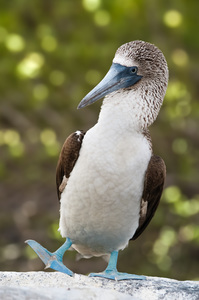spotlight: Galapagos islands
The Galapagos Islands are part of a volcanic archipelago that sit approximately 600 miles off the coast of Ecuador. The islands were formed between 3 and 10 million years ago and sit on the equator in both the northern and southern hemispheres. The first recorded visit was in 1535 by the Bishop of Panama, Tomás de Berlanga. Legend has it that he was fascinated by the tortoises that had a "saddle back", and thus nicknamed them "galapagos", the old Spanish word for saddle. They appeared on Ortelius' 1570 world map as “Insulae de los Galopegos,” or “Islands of the Saddle-backs, and the name stuck.
The Galapagos Islands are also associated with Charles Darwin. Darwin accompanied Captain Robert Fitzroy as a travel companion and naturalist on the HMS Beagle. His visit to the islands allowed him to observe the wildlife and their environment, which had a big impact on the formation of his Theory of Natural Selection. Learn more about Darwin and his worldwide journey in his book Voyage of the Beagle.
The Galapagos Islands are also associated with Charles Darwin. Darwin accompanied Captain Robert Fitzroy as a travel companion and naturalist on the HMS Beagle. His visit to the islands allowed him to observe the wildlife and their environment, which had a big impact on the formation of his Theory of Natural Selection. Learn more about Darwin and his worldwide journey in his book Voyage of the Beagle.
|
Galapagos consists of 127 islands, islets and rocks, 19 of which are large and 4 inhabited. Settlers started to arrive in the 1920's, and with increased tourism and fishing in the early 1960's the population has grown from 3000 to over 30,000 today. Santa Cruz is the most populated of all the islands. It is the main tourism hub and home to the Charles Darwin Research Center. Most people arrive at Blatra, the main airport servicing the Galapagos Islands. Flights arrive daily from continental Ecuador from either Quito or Guayaquil. |
|
|
The islands are surrounded by the Galapagos Marine Reserve which was created in 1986 and extended in 1998 to its current size of over 51,000 square miles. The Galapagos Islands are well known for its marine ecosystem and unique wildlife, many of which are only found in this area. - The Galapagos Penguin is the only penguin to live in the northern hemisphere. - The Galapagos Marine Iguana is the only marine lizard to exist in the world. - It is home to the world's largest cormorant and the only one unable to fly. |
|
How to see the islands
Most people visiting do so by cruise ship. Ships vary, from luxury cruise lines to smaller, privately owned vessels and charters. Ships carry between 10 -100 passengers and feature different levels of amenities, with the higher end ships offering well appointed cabins, lounges and highly trained, (fluent) English speaking guides. More economic options generally feature smaller boats, more cramped accommodations and fewer amenities. The Galapagos Islands has become one of the most popular destinations in the world. Therefore, licensed vessels sailing the islands follow a 15-day route established and approved by Galapagos National Park, with itineraries ranging from 3-14 days. Ships can not visit the same place twice within a 15 day period. They all follow the basic protocol of visiting the islands during the day, typically with two excursions, and navigating at night. A trip to the Galapagos Islands is quite often paired with a trip to Machu Picchu. |
|
|
When to go
The Galapagos is a year round destination, with average temperatures ranging from the low to high 80's. High season is mid June to mid September and mid December to mid January. December to May is warm, rainy and humid; February and March can be quite hot, averaging in the high 80's. June to November is cool and dry; the winds and seas tend to be rougher due to the Humboldt Current. The water is cooler and the average land temperature is in the 70's and low 80's. July to November is peak season for diving when whale sharks can be found at Wolf & Darwin. |






